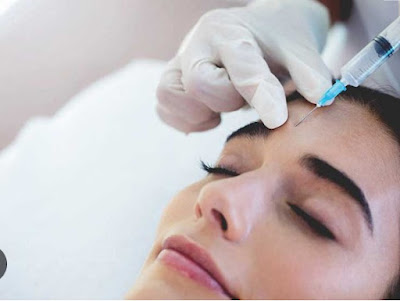Botox for Use
Why use botox
Botox is primarily used as a cosmetic treatment to temporarily reduce the appearance of wrinkles and fine lines on the face, particularly on the forehead, around the eyes, and between the eyebrows. It works by temporarily paralyzing the muscles that cause wrinkles, allowing the skin to appear smoother and more youthful.
Botox is also used for a variety of medical conditions, such as:
- Migraines: Botox is FDA-approved for the treatment of chronic migraines, which are headaches that occur on 15 or more days per month.
- Excessive sweating (hyperhidrosis): Botox injections can be used to reduce excessive sweating in the armpits, palms, and soles of the feet.
- Muscle spasms: Botox can be used to reduce muscle spasms in conditions such as cerebral palsy, spasticity, and dystonia.
- Bladder dysfunction: Botox can be used to treat urinary incontinence, urinary retention, and neurogenic detrusor overactivity.
- Strabismus: Botox can be used to correct crossed eyes, or strabismus, by relaxing the muscles that control eye movement.
It's important to note that Botox is only a temporary treatment, and the effects usually last for about 3-6 months. Repeat treatments are required to maintain the desired results.
why need repeat treatments for botox
Botox is a temporary treatment, and the effects usually last for about 3-6 months because the body will naturally break down and clear the botulinum toxin over time. Additionally, the muscles that were treated will eventually regain their ability to contract, which may cause wrinkles and fine lines to reappear.
Repeat treatments are needed to maintain the desired results and to keep the muscles paralyzed. The duration of the effects can vary depending on the individual, the area treated, and the dosage used. Typically, repeat treatments are recommended every 3-6 months.
It's important to note that the results of Botox may vary from person to person, and the optimal dosage and treatment schedule will depend on the individual's needs and goals. Your healthcare provider will be able to determine the best treatment plan for you, and will monitor your progress to ensure that you achieve the best possible results.
is botox danger?
Botox is a safe and effective treatment when used as directed by a qualified healthcare professional. However, as with any medical procedure, there are some potential risks and side effects associated with Botox.
The most common side effects of Botox are mild and temporary, such as pain, swelling, and redness at the injection site, headaches, and flu-like symptoms. These side effects typically resolve within a few days.
However, there are some rare but potential serious side effects associated with Botox, such as difficulty breathing or swallowing, muscle weakness, and vision problems. These side effects are most likely to occur if the toxin is not injected properly or if the dosage is too high.
Additionally, Botox should not be used by people with certain medical conditions, such as neuromuscular disorders, or by pregnant or breastfeeding women. It's important to discuss any pre-existing health conditions or medications you're taking with your healthcare provider before receiving Botox treatment.
Overall, when performed by a qualified healthcare professional, Botox is considered a safe and effective treatment for a variety of medical conditions and cosmetic concerns.
is botox expensive?
The cost of Botox can vary depending on several factors, including the location of the clinic or practice, the experience of the injector, the number of units needed, and the area being treated.
On average, the cost of Botox can range from $300 to $800 per treatment. However, it's worth noting that prices may vary widely depending on where you live, the region, and the clinic. Some places may charge more or less.
Also, it's important to keep in mind that Botox is a temporary treatment, and repeat treatments are typically needed every 3-6 months to maintain the desired results. So, The overall cost of Botox can add up over time.
It's also worth noting that Botox is not typically covered by health insurance, so the cost will have to be paid out of pocket. However, some medical conditions such as migraines and hyperhidrosis may be covered by insurance.
In general, it's a good idea to shop around and compare prices from different clinics or providers before deciding on a treatment. It's also important to consider the qualifications and experience of the injector and make sure that the practitioner is licensed and trained in the safe and proper administration of Botox.


Post a Comment for "Botox for Use"